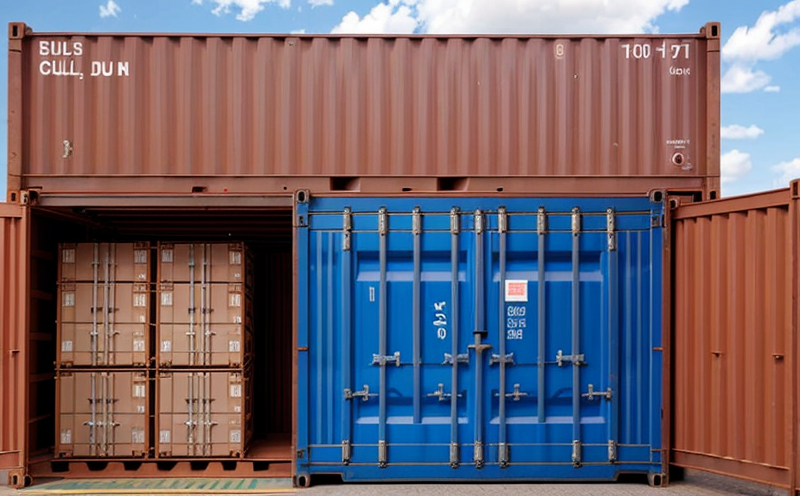USP Child Resistant Packaging Testing
The United States Pharmacopeia (USP) Child Resistant Packaging Testing is a critical service ensuring that pharmaceutical products are safeguarded from unauthorized access by children. This testing ensures compliance with regulatory standards and guidelines aimed at protecting the safety of young consumers.
Child-resistant packaging (CRP) refers to containers designed specifically to prevent children under five years old from opening them easily without adult assistance. Compliance with USP 789, Child-Resistant Packaging is mandatory for certain pharmaceutical products, especially those containing medications that are potentially harmful in overdose.
The testing process involves simulating real-world scenarios where a child might attempt to open the packaging. This typically includes using test devices and methods designed to replicate a child's actions, such as strength applied to the closure or the ease with which the lid can be removed without the correct sequence of actions. The goal is to ensure that the product remains secure against unauthorized access.
For pharmaceutical companies, this testing is not just about compliance; it’s about demonstrating a commitment to public safety and regulatory standards. The service encompasses a range of tests, including mechanical stress tests, visual inspections, and functional assessments, all aimed at ensuring that the packaging meets the stringent requirements set by USP.
The process begins with thorough specimen preparation, where each type of packaging is tested under controlled conditions to simulate actual use. Instruments such as child resistance testers are used to apply standardized forces or movements that mimic a child's attempts to open the package. These devices help in evaluating the effectiveness of various closure mechanisms.
The testing also involves detailed documentation and reporting, which are crucial for compliance purposes. Reports typically include test protocols, results, and recommendations for any modifications needed to meet USP requirements. Compliance officers and quality managers rely on these reports to ensure that their products meet all necessary regulatory standards.
In addition to the mechanical aspects of testing, there is a growing emphasis on sustainability. Child-resistant packaging often involves materials that are recyclable or biodegradable. Testing in this area helps pharmaceutical companies understand the environmental impact of their packaging choices and identify more sustainable options without compromising safety.
Why It Matters
The importance of USP Child Resistant Packaging Testing cannot be overstated, especially given the potential risks associated with pediatric access to pharmaceuticals. Compliance with these standards is not just a legal requirement but also a moral obligation to protect public health.
Pediatric poisonings are a significant concern worldwide. According to recent data from the World Health Organization (WHO), accidental poisoning by over-the-counter medications and prescription drugs remains one of the leading causes of pediatric emergency room visits globally. The USP Child Resistant Packaging Testing plays a pivotal role in mitigating these risks.
By ensuring that packages are child-resistant, pharmaceutical companies can significantly reduce the likelihood of accidents involving children. This not only protects children but also minimizes liability for manufacturers and healthcare providers. Moreover, compliance with standards such as USP 789 enhances a company's reputation and trustworthiness in the market.
From an economic standpoint, avoiding legal penalties and potential recalls is crucial for pharmaceutical companies. Non-compliance can lead to costly product withdrawals and lawsuits, affecting brand reputation and financial stability. The testing service thus serves as a proactive measure against such risks.
Environmental and Sustainability Contributions
The environmental impact of packaging is increasingly becoming a focal point for pharmaceutical companies. Child-resistant packaging, while crucial for safety, must also consider its ecological footprint. Testing in this area focuses on identifying materials that are both child-resistant and environmentally friendly.
Recyclability is one key aspect of sustainable packaging. Many child-resistant packages are made from plastics or coatings that can be recycled after use. Testing these materials ensures that they meet the necessary standards for recycling, thereby promoting a circular economy. Biodegradable options are also being explored to minimize long-term environmental impact.
The testing process involves evaluating how well different packaging designs perform under various conditions, including exposure to sunlight and moisture. This helps in understanding the longevity of these materials and their potential for degradation over time. By focusing on sustainable practices, pharmaceutical companies can contribute positively to environmental conservation efforts while maintaining product safety.
Use Cases and Application Examples
| Application Example | Description |
|---|---|
| Pediatric Medications | This includes over-the-counter medications like acetaminophen and prescription drugs such as opioids. Testing ensures that these packages are secure against unauthorized access. |
| Vaccines | Child-resistant packaging is essential for vaccines to prevent accidental exposure, which could lead to contamination or misuse. |
| Topical Medications | Skin creams and ointments often contain active ingredients that are harmful if ingested. Proper packaging ensures they remain secure from children's reach. |
| Oral Liquid Preparations | Medicines such as syrups and suspensions require child-resistant closures to prevent accidental ingestion by young children. |
In addition to these specific applications, the testing also extends to new product launches. Companies often conduct extensive testing on prototypes before bringing them to market. This ensures that any changes in design or materials do not compromise safety and compliance with USP standards.





